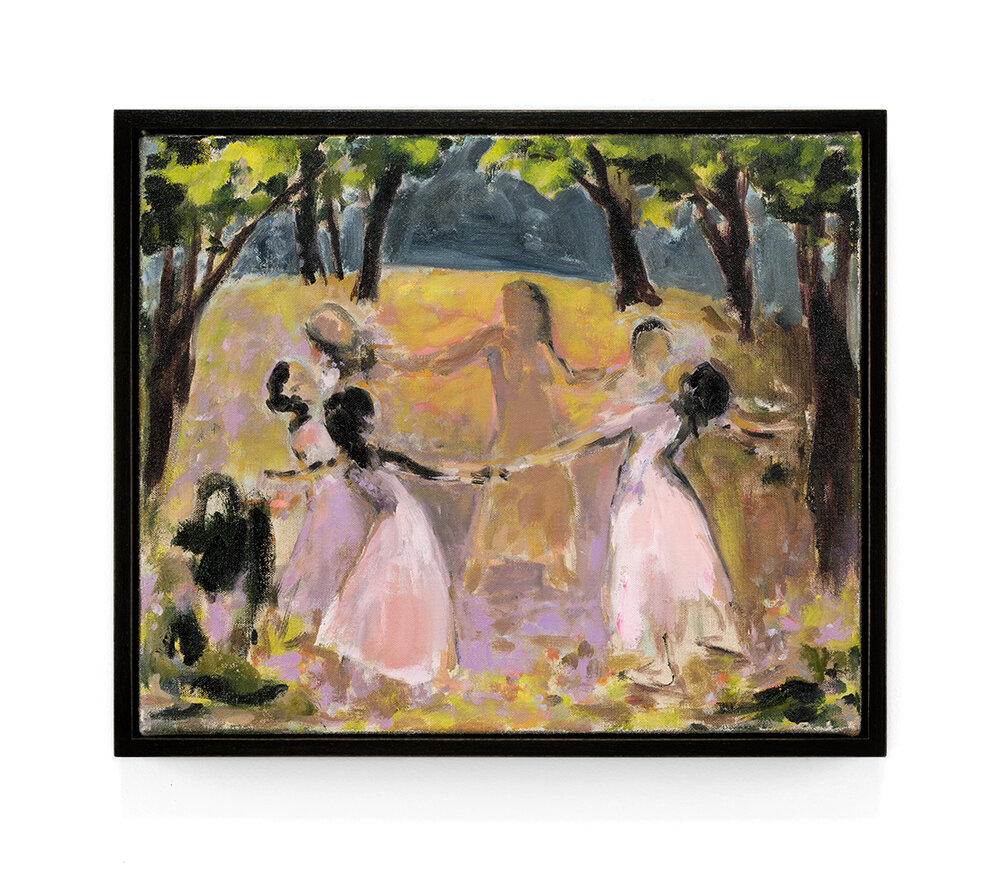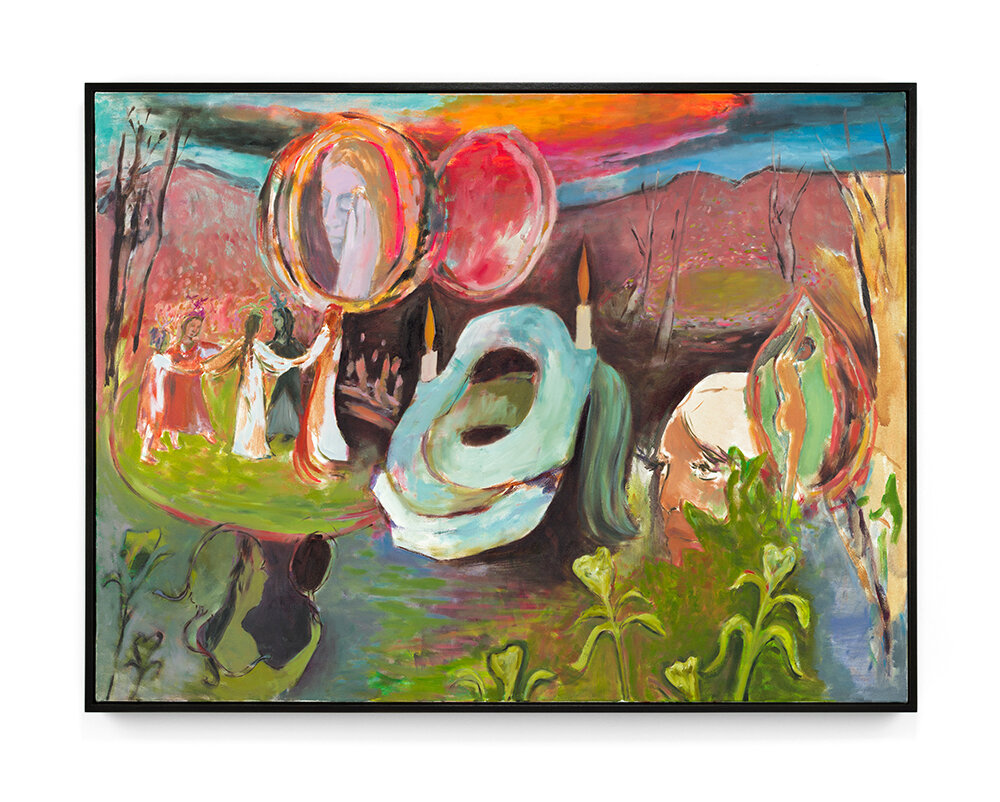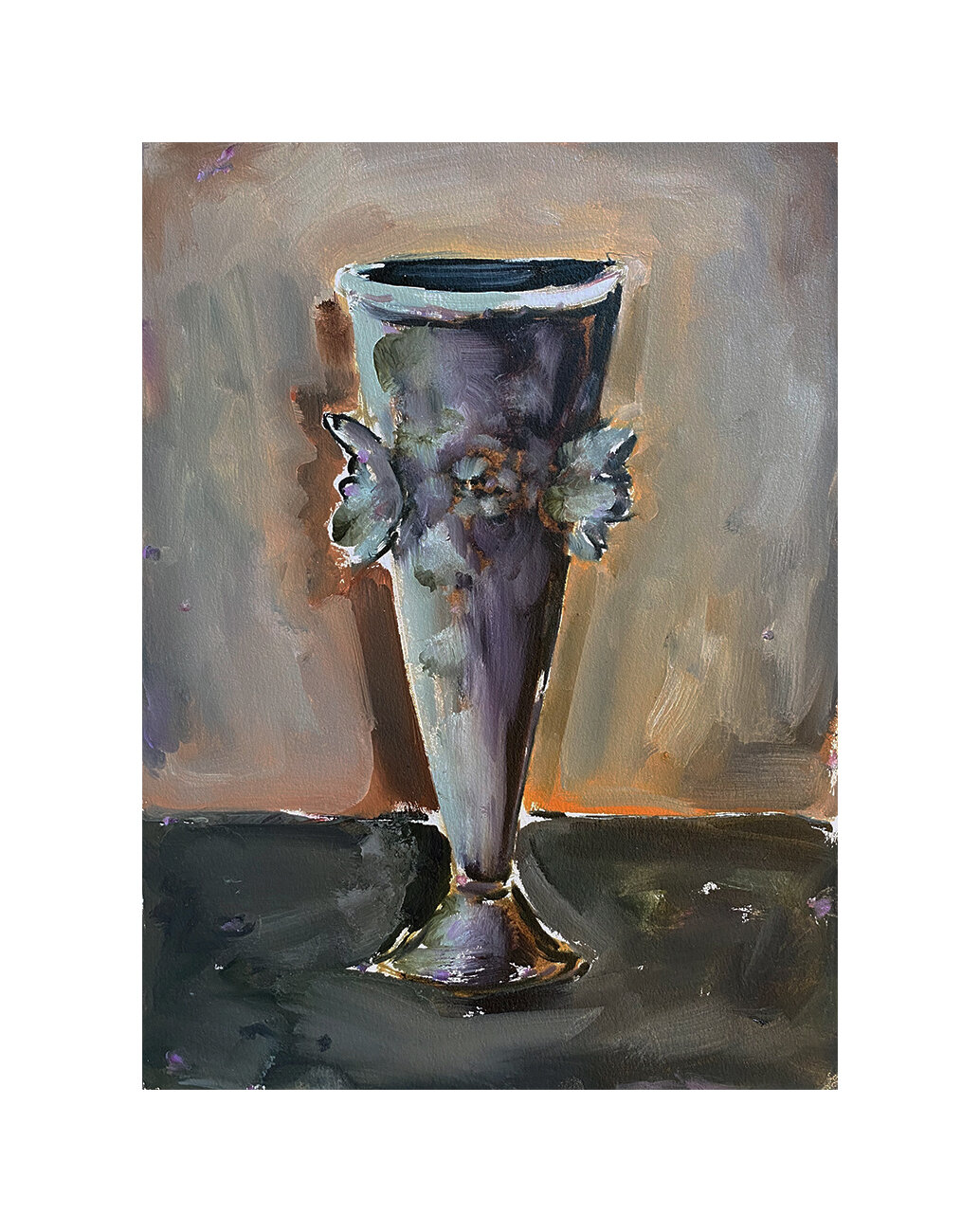Anya Roberts-Toney in "Summer’s Eve"
BY LINDSAY COSTELLO
At Nationale, Anya Roberts-Toney’s Summer’s Eve imagines a matriarchal realm with an edge. The artist’s series of twelve oil and acrylic paintings are shaped by visions of euphoric women amongst flora, but hint at the complexities inherent to such a space.
Like a prismatic oil spill, Roberts-Toney’s color compositions are arresting, yet create an illusive unease. Women bathe amid fiery skies, shooting laser-like fountains of variegated light from their eyes. The luminous palette expresses a departure from our world. In A Separate Fate (Ophelia), Roberts-Toney reimagines Millais’s tragic depiction of Ophelia, at rest in an immersive landscape of coral, violet, and aquamarine as an oversized bird flies overhead. Roberts-Toney’s Ophelia does not necessarily feel less ill-fated, but she is united with her surroundings in a way that Millais bypassed. For all of Roberts-Toney’s color experimentation, a one-with-nature sense lingers.
The exhibition’s title suggests an extended ending, the summer solstice being the longest day of the year, marking a gradual shift toward autumn. It’s also a time of fertile Midsummer celebration and feminine power. Agile women in Roberts-Toney’s paintings reside in a summer’s eve that could be interpreted as near-utopian or post-apocalyptic. Their lush surroundings recall Michelle Blade’s works but feel more steeped in a subtle melancholy. The women revel, but hints of chaos remain. In their world, stretching toward a new way of life creates a laborious and lengthy challenge, an Inanna-esque dark night of the soul. Roberts-Toney’s delicate incorporation of hourglasses, mirrors, burning candles, and reflective pools reinforce the influence of time and self-actualization on this world. She hints at this through her painting titles, as well—New Monuments; Landscape for a Reckoning; Hold Still; In Her Mind’s Eye; and so on.
In Reach Down, Find That Slow Flame Buried In Your Heart, a group of women gather in a circle, hands held, backs arched in dreamlike desire toward the surrounding trees. The motif is repeated in the painting Summer’s Eve. The most obvious visual association here is Matisse’s The Dance, but this circular composition has also often been symbolic of ritual, fairies, and witchcraft in historical painting, as seen in Goya’s Witches Flight, Dürer’s Witch Riding on a Goat, Fuseli’s The Shepherd’s Dream, and Walter Jenks Morgan’s A Fairy Ring. Roberts-Toney connects the disparate figures depicted in her portraits through these scenes of distinctly feminine vigor, their worlds merging as she toes the line between festivity and ceremony, tranquility and a mustering of sustained energy, or “slow flame.”
Two paintings of vases were included in this exhibition, and indeed, vessels can be found throughout the other works if one looks closely. In Roberts-Toney’s portraits, women converge with vases, boundaries blurred between where the object ends and skin begins. Is this a critique of a woman’s synonymity with the vessel, as an object to be filled, prized when ornamental? Or are these vases indicative of the oceans within us? Either, or neither, could be true in this complex mythical world. Questions arise without clear answers, but the experience of immersion that Roberts-Toney creates is worth the challenge.
Images courtesy of the artist and Nationale, by © Mario Gallucci.
Lindsay Costello is an artist, writer, and herbalist-in-training in Portland, OR. She is the founder/editor of soft surface poetry and the co-founder of Critical Viewing. She has written art criticism for Hyperallergic, Art Papers, Art Practical, and many other publications.








